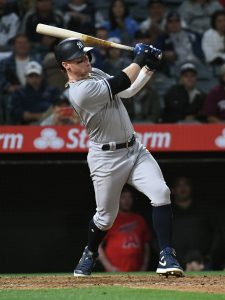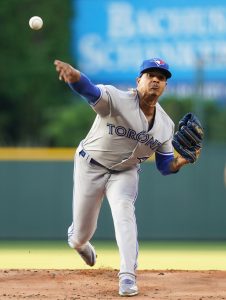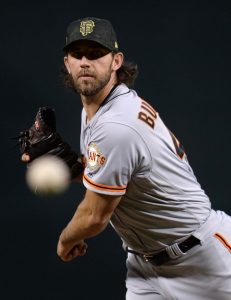Over the past year, the Cubs have sent a lot of good players out the door on their way to slashing payroll and starting a new rebuild. Yu Darvish, Kris Bryant, Anthony Rizzo, Javier Baez, Craig Kimbrel and more. But one of the key pieces of their recent competitive window remains. Despite occasional rumors that he was being shopped around, Willson Contreras is still a Cub. The backstop will be eligible for arbitration for a third and final time this winter, a season in which the Cubs are unlikely to be competitive, given their recent sell-off. That means they would be wise to commit to one of two paths, either extending him or trading him.
When choosing between the two paths, however, something that might tip the scales is the weak free agent crop of catchers this offseason. With such a low supply of catchers available, teams might have to turn to trades if they want to upgrade behind the plate. That could make Contreras a hot commodity, given his solid track record. Across the past six seasons, Contreras has a line of .259/349/.458, for a wRC+ of 114, producing 12 wins above replacement, according to FanGraphs. Only five catchers in baseball produced more fWAR over that span. (Yasmani Grandal, J.T. Realmuto, Buster Posey Mike Zunino and Gary Sanchez.) Contreras has also been remarkably consistent in that time, with his wRC+ falling between 101 and 126 each year, and his fWAR always between 0.7 and 2.7.
Financially speaking, he won’t be prohibitively expensive. His 2021 salary was $6.65MM. He will get a raise on that through arbitration, probably to the $10MM range, approximately half of what Grandal, Realmuto and Posey are making per year on their current contracts.
As to who would be interested in acquiring him, it would have to be a team with a need behind the plate, of course. But given that he only has one year of control, it would also have to be a win-now club. Let’s look at which teams could fit the bill.
Cleveland: Roberto Perez can be controlled for 2022 with a club option valued at $7MM. However, he’s now two years removed from his excellent 2019 season. Since then, he’s only played 76 games due to various injuries and hit .155/.253/.277 for a wRC+ of 49. Austin Hedges got 85 starts at catcher this year and hit just .178/.220/.308 for a wRC+ of 40. There’s certainly room for improvement on that kind of production. The club also has maximum payroll flexibility. Once they exercise their $11MM club option on Jose Ramirez, that will bring their total 2022 payroll commitments up to the range of… $11MM. Bringing in Contreras along with a few free agents, and then having some better health in the rotation, 2022 could see the club easily surpass their 80-82 record from this year.
Mariners: After surprising the baseball world with a 90-win campaign, the Mariners have seemingly moved beyond rebuilding and into competing. In 2021, they gave playing time to Luis Torrens, Tom Murphy and Cal Raleigh, none of whom ran away with the job. Murphy had a tremendous season in the shortened 2019 but couldn’t replicate it in 2021. He hit .202/.304/.350 this year, for a wRC+ of 87 and 1.0 fWAR. Torrens was better with the bat but was mostly being used as a designated hitter down the stretch. Raleigh has decent defensive numbers but hit a paltry .180/.223/.309 for a wRC+ of 47. Mariners’ president Jerry Dipoto recently spoke about adding more offense for 2022 and has a trade-happy reputation. Going after Contreras could be one way to add some more thump to Seattle’s lineup.
Red Sox: In 2021, Boston split the catching duties between Christian Vazquez and Kevin Plawecki, both of whom were okay but not great. Vazquez hit .258/.308/.352, wRC+ of 77. Plawecki’s line was .287/.308/.389, wRC+ of 102. They each produced 0.5 fWAR. Both of them have one year of team control left, as Plawecki is going into his final arbitration year whereas the Red Sox have a $7MM club option on Vazquez. Contreras would be an upgrade for the 2022 season and could help bridge the gap to younger catchers like Connor Wong and Ronaldo Hernandez.
Rockies: The Rockies gave most of their 2021 catching starts to Elias Diaz, who had a sudden power breakout. Coming into this year, he had 15 home runs in 273 career games. In 2021, he had 18 dingers in 106 games. Despite this power surge, he still only put up a wRC+ of 92, partially because of playing his home games at Coors. (wRC+ controls for ballpark factors.) Dom Nunez was the primary backup to Diaz, and he put up a line of .189/.293/.399, which adds up to a wRC+ of just 69. Contreras could easily provide a boost to this tandem, if the club thinks it’s in win-now mode, which they apparently do.
Yankees: It’s become an annual tradition for people to debate whether or not the Yankees will stick with Gary Sanchez. His tremendous early years have seemed too tantalizing to give up on, even as he’s struggled more recently. In 2021, he was competent enough, hitting .204/.307/.423, producing a wRC+ of 99 and 1.5 fWAR. Like Contreras, he is going into his final arbitration season, and will be due a raise on a salary of $6.35MM. Could the Yankees be willing to swap him out for a catcher with a similar payout but more consistent production?

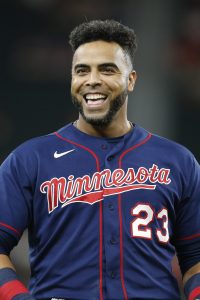
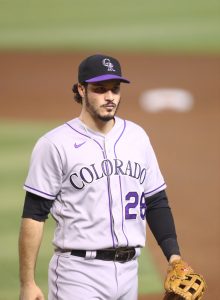
 Betts earned $10.5MM in 2018
Betts earned $10.5MM in 2018 